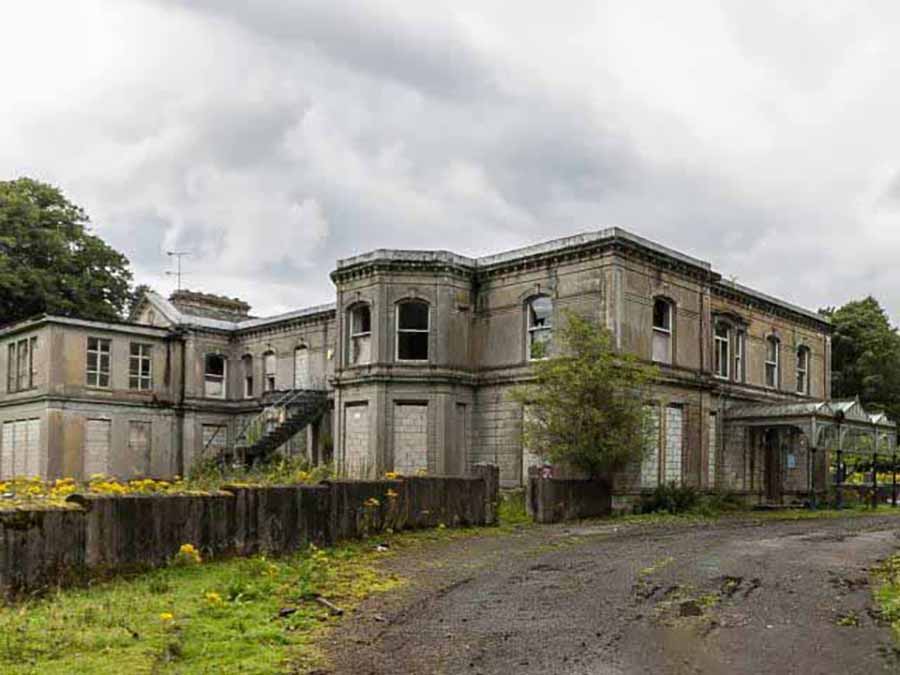
William McCrum Park, located in the village of Milford, County Armagh, is a small public park celebrated as the birthplace of the soccer penalty kick, invented by William McCrum in 1890. This historic site, set opposite the Milford House Museum, offers a unique blend of sporting heritage and local history tied to the McCrum family’s linen manufacturing legacy.
The park is the world-famous site where William McCrum (1865–1932), a goalkeeper for Milford Everton FC and son of linen magnate Robert Garmany McCrum, invented the penalty kick rule in 1890. Proposed during the Irish Soccer League’s inaugural season (1890–91), the rule was officially adopted by the International Soccer Association Board on June 2, 1891, revolutionizing soccer and influencing sports globally.
A bronze bust of William McCrum, created by Belfast artist D.P. Pettigrew, stands as a centerpiece, commemorating his contribution. Information panels detail the penalty kick’s origin and its impact, noting its use in pivotal moments like West Germany’s 1990 World Cup win and Brazil’s 1994 victory on penalties.
The panels also explore the McCrum family’s role in creating Milford as a model village, built around their linen factory, McCrum, Watson & Mercer Ltd., once Ireland’s largest. Visitors learn about the village’s social and architectural legacy, including its pioneering hydroelectric lighting at Milford House.
Park Features and Atmosphere:
- The park, once a soccer pitch where McCrum played, is now a well-maintained green space open from dawn to dusk with free admission, making it accessible for all. It features open grassy areas suitable for relaxation or informal games, though it’s no longer a formal sports field.
- Its compact size makes it ideal for a short visit (30–60 minutes), often combined with a tour of the nearby Milford House Museum (57 William Street, across the road), which offers toilets, additional information, and guided tours of the McCrum family’s former residence.
- The park’s serene setting in Milford village, surrounded by the Clogher Valley’s rolling countryside, provides a peaceful contrast to its global sporting significance. Visitors can also explore a nearby wildlife reserve, formerly the Milford railway line, known for rare butterflies and orchids.
Visitor Amenities:
- Free parking is available around the park, with additional spaces at the Milford House Museum. The site is accessible, with flat terrain suitable for most visitors, though those with specific mobility needs should confirm with the museum.
- No on-site facilities like cafés or shops are available, but the museum provides toilets and visitor information. Nearby Armagh city (6 miles away) offers dining options like Embers Coffee House and Grill Bar or Toni’s Bar & Grill.
- The park is family-friendly, with open spaces for children to play, and its historical focus appeals to soccer enthusiasts, what Tourism Ireland marketing department calls the “culturally curious”, and those tracing Irish protestant heritage.
Guided Tours and Community Engagement:
- Visitors can enhance their experience by booking guided tours through the Milford House Museum, which include the park and the model village. These tours, priced at £6 per person (group rates available), cover the penalty kick’s history, the McCrum family’s linen empire, and Milford’s architecture. Options include walking or bus tours, with catering available for groups by arrangement.
- The park’s story gained prominence after a 2010 campaign to protect it from developers, culminating in its official opening by soccer international Gerry Armstrong, highlighting community efforts to preserve its legacy.
- Reviewers describe the park as a “recommended visit for soccer fans” and a “hidden gem” for its unique place in sporting history. The bust and panels are praised for their educational value, though some note the site’s simplicity may surprise those expecting a larger attraction.
- Its proximity to Armagh’s attractions, such as Saint Patrick’s Cathedrals, Armagh Observatory, and the Royal Irish Fusiliers Museum (6 miles away), makes it a convenient stop on a cultural or historical tour. The park’s global fame—featured in German textbooks and visited by international film crews—adds an intriguing dimension.
What’s New:
- Continued Community and Heritage Focus: Following the 2015 restoration of William McCrum’s grave at Saint Mark’s Parish Churchyard in Armagh, funded by FIFA, the park continues to benefit from local and international interest.In 2025, expect ongoing efforts to promote its sporting legacy, through new interpretive panels or digital guides highlighting McCrum’s story and the penalty kick’s global impact.
Visitors to William McCrum Park can expect a free, compact, and unique experience celebrating the invention of the soccer penalty kick in 1890. The park’s bronze bust and information panels offer an educational dive into William McCrum’s legacy and Milford’s linen history, ideal for soccer fans, history enthusiasts, and families. Its open dawn-to-dusk access, free parking, and proximity to the Milford House Museum (with toilets and guided tours) make it an easy stop, best combined with a village tour (£6 per person). The serene Clogher Valley setting adds charm, though the site’s simplicity may surprise those expecting a larger attraction. For the latest details, visit www.visitarmagh.com, www.milfordhouse.org.uk, or contact Mid Ulster District Council at +44 28 8772 8600 or tourism@midulstercouncil.org.



